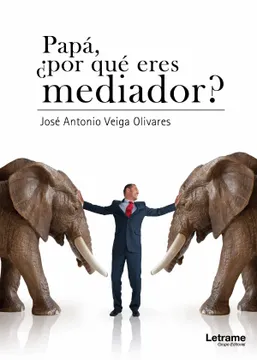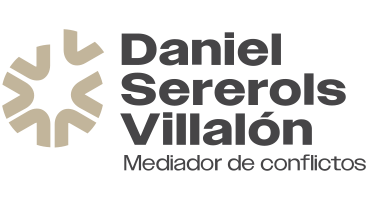
14 Jun Workplace Mediation
Conflict Prevention, Stress Reduction and Workplace Climate Improvement: Keys to More Human and Efficient Organizations
On June 11th, 2025, I attended the first workshop in the series “Transform Your Organization through Dialogue and Wellbeing”, organized by the Official College of Psychology of Catalonia, as part of the (P) Yes to Mediation Project. The workshop, titled “Workplace Mediation and Psychosocial Wellbeing. Conflict Prevention, Stress Reduction and Improvement of Workplace Climate”, featured three outstanding professionals: Javier Wilhelm, Gemma Vall and Rafa Llinàs, under the coordination of Connie Capdevila, whom I sincerely congratulate, along with the entire organizing team, for the quality and depth of the content.
This space for reflection and learning highlighted a reality that is often silenced: workplace conflicts exist, and not just as isolated tensions, but as recurring dynamics that can seriously affect people’s emotional health, team performance, and organizational sustainability. It also showed that, with the right tools, these dynamics can be transformed into opportunities for growth.
Workplace mediation is not a utopia: it is preventive, realistic and effective action
Workplace Mediation is a well-established tool in countries like the United Kingdom, and is increasingly being adopted in our context. It is not a decorative practice, nor a naïve alternative to traditional leadership. It is a concrete methodology based on solid principles: voluntariness, confidentiality, neutrality, impartiality and respect, that allows conflicts to be addressed in a structured, safe and humane manner.
As Javier Wilhelm emphasized, talking about mediation is not romantic—it is effective practice, with measurable and mutually beneficial results. Mediation does not impose solutions, but rather helps people find their own way out, in an informed, dialogued, and consensual manner.


One of the key questions Wilhelm asks in early meetings—echoing mediator José Antonio Veiga Olivares—is:
“What name would you give to this conflict?”
This is an invitation to name the issue, to depersonalize it and make it tangible.
He goes further, inviting reflection: “Are they seeking victory or peace?” To which he answers: “I work to build peace.” And building peace, in an organization, means building coexistence.
How does a workplace mediation process work?
There are two basic methodologies, depending on the size of the conflict:
- Between 2 or 3 people:
→ Initial individual interviews
→ Joint session
→ Follow-up and closure - In teams of more than 3 people:
→ Individual interviews
→ Jointly agreed action plan
→ Follow-up and closure
This process is flexible, confidential and respectful, but above all, it is effective. It enables the restoration of broken relationships, clarifies misunderstandings, acknowledges emotions and, very often, leads to long-lasting agreements.
The real benefits of a culture of prevention
An organization that integrates mediation, dialogue circles and emotional management into its structure not only prevents conflicts, but also fosters trust, creativity, and shared responsibility.
Unaddressed conflicts may result in:
- Decreased performance
- Increased absenteeism
- Repeated complaints
- Serious management errors
- Silent suffering and accumulated tension
- Non-compliance, psychosocial risks and emotional disconnection
By contrast, when an organization commits to prevention, clear protocols and genuine communication spaces, it builds a culture based on care and mutual responsibility.
As one of the speakers reminded us, real change doesn’t happen overnight. It takes time, follow-up and sustained commitment. And in this process, the role of leadership and middle management is essential. Leadership style, openness and the willingness to lead with empathy can determine the emotional tone and health of an entire organization.
A context that challenges us: double disruption and high demands
We are living through a time of double disruption:
- COVID-19 has left a mark on mental health, organizational structures and perceptions of work.
- The rise of Artificial Intelligence is reshaping roles, processes and creating uncertainty, with a clear emotional impact on many employees.
In response to these challenges, the most necessary skills for building a sustainable future are:
- Analytical and critical thinking
- Creativity, innovation and initiative
- Problem-solving and accurate diagnosis
- Leadership and positive social influence
- Ethical use, control and responsible design of technology
- Resilience, stress tolerance and emotional flexibility
These competencies are closely linked to a culture of dialogue, emotional intelligence and peacebuilding.
Building peace within the company: a shared responsibility
According to the Institute for Economics & Peace, the pillars of a culture of peace include:
- Effective institutions
- Equitable distribution of resources
- Free access to information
- Education and innovation
- Acceptance of diversity
- Low levels of corruption
- Stable business environments
These principles are not exclusive to governments or major organizations. They can—and should—also apply to companies, teams and workspaces. Each of us can play an active role in building peace within our professional environment.
Conclusion: working better also means living better
Integrating mediation and conflict prevention is not an accessory. It is a strategic decision, an act of responsibility, and above all, an investment in people.
The most successful organizations are not those without conflict, but rather those that know how to handle it with maturity and appropriate tools. A healthy workplace culture generates commitment, creativity and long-term resilience.
And today, this is more necessary than ever.

